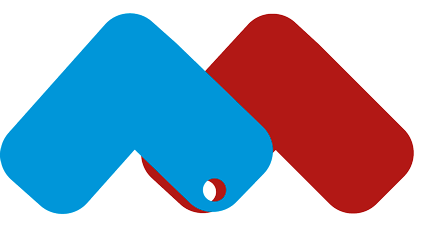What Different Types of Leadership and Management Styles Inspire you?
You all know many of the subcategories used to describe variations of leadership such as change leadership, organizational leadership, strategic leadership, situational leadership, collaborative leadership, distributed leadership, inclusive leadership, charismatic leadership, authentic leadership, creative leadership, toxic leadership, facilitative leadership, coaching leadership, delegative leadership, cross-cultural leadership, contingency leadership, compassionate leadership, and consultative leadership. The list could go on…
Yet there are some overarching headlines for some different types of leadership, which we’ll take a closer look at. It can be fruitful to remind ourselves of the various forms of leadership and management types to sharpen our gaze and increase the level of self-reflection concerned with our daily practices.
Please leave a comment below the article if you think we’ve overlooked some important details or types of leadership, or if you like to share your experiences and thoughts in general.
What is Democratic Leadership (Shared Leadership)?
Democratic leadership is also at times referred to as shared leadership, open-book management, participative decision-making, and participative leadership.
As opposed to the authoritarian leader, the democratic leader shares leadership decision making, responsibilities, and problem-solving with team members and staff.
Professor Gastill defines democratic leadership as being about the following (STU Online):
Distributing responsibility among the membership, empowering group members, and aiding the group’s decision-making process
Participation is key to democratic leadership; whether it concerns the engagement of employees, members of a non-profit organization, members of political parties, parents of students attending a school, or something different.
It should be noted that democratic leaders do not delegate decision making to experts or avoid taking part in the process. Rather, they aim to actively take part in the decision making process.
Democratic leaders are also coaches (see below for Coaching Leadership) as they aim to engage and develop a team spirit among employees.
More so, considering ‘the changes taking place in technology, demographics, markets, consumers, and their preferences – economies have significant impacts on organizations. The leader examines how to respond to these environmental changes and what strategies to adopt. Clearly, this exercise is not self-contained, rather it is about people involvement, contributions, and the conceptualizing of new ideas and different possible input from employees (Sharma 2013: 54).
A democratic leadership style is known to engage and motivate employees; particularly knowledge workers.
_____
READ ALSO: How to Lead, Manage and Motivate Knowledge Workers
_____
What is Situational Leadership
When practicing situational leadership, the leader adapts his/her style of leadership to organizational members involved, while keeping an eye on the environment within which they operate. Situational leadership concerns a leader’s ability to adjust to the situation at hand, more than it is about personal leadership skills.
Situational leadership, in short, takes people in context seriously. The leader applies the leadership style that is best suited to the situation. The leader is agile.
Situational leadership theory introduces four different types of leadership styles, which are 1) Telling, 2) Selling, 3) Participating, and 3) Delegating. The theory explains how these different leadership styles are best suited for leading people at various maturity levels. The idea is to match a leadership style with the maturity level for which it is the best to fit.
When asked: Which style of leadership is the best?, the situational leader answers: ‘That depends’.
To read more about Situational Leadership, Goleman’s (author of emotional intelligence) six leadership styles, and for visual illustrations of how leadership styles are matched with maturity levels, please go to the following article.
_____
READ ALSO: What is Situational Leadership Theory? Definitions & Examples
_____
What is Servant Leadership?
The servant-leader has a greater focus on serving the employees of the organization rather than the traditional focus on the thriving of the organization. first and foremost. Hence, the philosophy of servant leadership is that the leader should serve the people of the organization first, rather than it is the people who should serve the leader.
As a servant leader, you focus on what people need and less on what people feel. It is, in other words, not a leadership practice that aims to avoid conflict, unpopular decision making, or feedback of any kind.
Founder of Servant Leadership Robert K. Greenleaf asks:
Do those served grow as persons? Do they, while being served, become healthier, wiser, freer, more autonomous, more likely themselves to become servants?
His answer is yes. The idea is that the organization as such will grow due to the growth of the individual workers – their commitment and engagement.
The mind-shift introduced by Greenleaf is thus one where a leader goes from ‘I lead’ to ‘I serve’.
Skills of the servant leader are listening, empathy, compassion, awareness, persuasion, stewardship, a commitment to the growth of staff, and community building, among others.
What is Coaching Leadership?
Organizations are increasingly training leaders as coaches while preparing for a future that among many other things is adapting to the digital age.
The command-and-control era of bureaucratic leadership is left behind for a new coaching approach to take over; an approach where leaders and managers at all levels are trained to both share their own knowledge and also ask questions that provide new insights on behalf of both employees and leaders.
John Whitmore is known for saying that ‘Coaching is unlocking people’s potential to maximize their own performance (2002).
To the leader accustomed to the bureaucratic or authoritarian leadership style, a coaching approach may be experienced as uncomfortable and a ‘too soft’ approach. A study in 2000 by famous Daniel Goleman, the author of Emotional Intelligence, showed that leaders did not like the slow and tedious work it is teaching and helping people to grow.
Coaching leaders prefer collaboration, partnership, creativity, and feedback, and learning over command-and-control. This invokes self-belief and responsibility among employees. Thus, coaching leadership is essentially about empowering people and it is therefore related to servant leadership in the sense of bringing out the highest potential in people.
As a coaching leader, you master to listen without interruption and provide thoughtful feedback. You encourage employees to elaborate on things that puzzle you, rather than judge their line of thoughts presented to you.
While coaching leadership is recognized to produce a positive environment, let employees know what is expected of them, endure a company’s time of change it is also known that it takes time to make a coaching leadership style effective. Moreover, it calls upon the leader to be skilled and understand that different coaches are needed for different situations.
What is Bureaucratic Leadership
Bureaucratic leadership adheres to formalized processes, procedures, and structures. It emphasizes a long list of rules, policies, and is known for hierarchies that define expectations and the chain of command.
The bureaucratic leadership is attentive to the administrative needs of the organization, thus it is a highly regulated business environment.
While it is known to make creative minds and innovation suffer, some will argue for it to be an extremely effective management style in organizations that do not rely on creativity and innovation from employees.
As bureaucratic leaders rely on the status quo, this is a leadership style that does not lend itself easily to organizational change. Bureaucratic leaders are known to find it difficult to adapt to change as they need to find new rules and principles for their leadership.
The bureaucratic leadership style is commonly attributed to public management and founded by Max Weber in 1947, who presented the bureaucracy as the most efficient and rational way to organize, and control, and be effective – while eliminating favoritism (Listen to Professor Stewart Clegg talk about Max Weber in this podcast: Lessons from a political thinker who died in the last great pandemic).
The enormous emphasis on finding consistency causes bureaucratic leaders to be vulnerable to overlook the value of new opportunities. The success of the past is no longer considered a guide to the future
What is Authoritarian Leadership (Autocratic Leadership)?
The authoritarian leader makes strategies, plans, and decisions without consulting teams nor organizational members at large. It emphasizes individual control over input from team members.
_____
READ ALSO: What is Psychological Safety and How to Create it?
_____
As the authoritarian leader makes decisions based on his/her own judgment and ideas – this leader may feel threatened by other people’s knowledge and advice as it causes some anxiety about their own decision making capacity as well as their reputation and self-narrative about being the best source of knowledge for making appropriate decisions.
It is a leadership style that ‘stresses personal dominance, strong centralized authority, and control over subordinates, and unquestioning obedience’ (Du et al. 2020).
Research demonstrates how an authoritarian leadership style negatively impacts organizational outcomes (Shen et al. 2019).
In the following article Professor, Stewart Clegg explains the downsides of authoritarian leadership. You can also read about the French Telecom example of authoritarian leadership, which eventually convicted French executives to jail sentences as their leadership resulted in several suicides among employees.
_____
READ ALSO: Stewart Clegg about Fatal Leadership Approaches
_____
The Advantage of Knowing Different Types of Leadership and Management Styles
Understanding the foundation of different types of leadership and management styles allows you to adapt your approach to the situation you are facing.
This understanding of the strengths and weaknesses of your leadership type or style will also increase your level of success when communicating with organizational members.
Knowing your weaknesses provides knowledge of where to set in, in order to upgrade your skills and expand your mindset for future greatness. Moreover, having knowledge of the different types of leadership and management styles provides you guidance when facing new challenges. You can then focus your awareness on how different styles can contribute positively or negatively to various contexts, problems, and situations.
References for Different Types of Leadership and Management Styles
Du, Jing; Nan Nan Li & Yuan Jing Luo (2020). Authoritarian Leadership in Organizational Change and Employees’ Active Reactions: Have-to and Willing-to Perspectives. Frontiers in Psychology,
Harms, P. D., Wood, D., Landay, K., Lester, P. B., and Lester, G. V. (2018). Autocratic leaders and authoritarian followers revisited: a review and agenda for the future. Leadership Q. 29, 105–122.
Sharma, L. Jibon Kumar and S. Keshorjit Singh (2013). A Study of Democratic Style Leadership. International Journal of Management & Information Technology, Vol. 3, No. 3.
Shen, Y. M., Chou, W. J., and Schaubroeck, J. M. (2019). The roles of relational identification and workgroup cultural values in linking authoritarian leadership to employee performance. Eur. J. Work Organ. Psychol. 28, 498–509.
Whitmore, John (2002). Coaching for Performance: GROWing Human Potential and Purpose – the Principles and Practice of Coaching and Leadership (People Skills for Professionals. Nicholas Brealey Publishing.
201018








